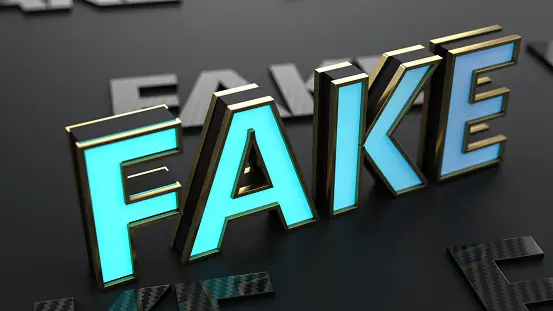Decoding Deceit: Recognizing Common Counterfeit Signs
![]()

In a marketplace rife with imitation and deception, consumers must be vigilant to avoid falling victim to counterfeit products. This comprehensive guide unveils common counterfeit signs, equipping consumers with the knowledge to discern between genuine items and deceptive replicas.
1. Inadequate Packaging Quality
Counterfeit products often feature subpar packaging quality. Look for discrepancies in color, design, and print quality compared to authentic packaging. Genuine products invest in high-quality packaging materials, and any noticeable deviations may signal a counterfeit attempt.
2. Spelling and Grammar Errors
Pay close attention to the product's labels, tags, or packaging for spelling and grammar errors. Authentic products undergo meticulous quality control, including proofreading. Counterfeiters may overlook these details, leading to inconsistencies that savvy consumers can spot.
3. Suspiciously Low Prices
If a deal seems too good to be true, it probably is. Counterfeiters often lure buyers with significantly lower prices compared to the market value of genuine products. Exercise caution when encountering prices that deviate dramatically from the standard, especially from unverified or obscure sellers.
4. Flawed Logo Reproduction
Authentic products feature precise and well-defined logos. Counterfeiters may struggle to replicate logos accurately, resulting in blurred or distorted versions. Examine logos closely, checking for inconsistencies in color, shape, or overall alignment.
5. Poor Build Quality
Counterfeit products frequently exhibit inferior build quality compared to their authentic counterparts. Assess the material, stitching, and overall craftsmanship. Genuine products invest in quality production processes, while counterfeits may cut corners, leading to noticeable flaws.
6. Lack of Holographic Features
Many brands incorporate holographic features into their packaging or product labels as a security measure. Counterfeiters may find it challenging to replicate these features accurately. Check for holographic elements and verify their authenticity by tilting the product to observe any expected shifts in the holographic display.
7. Absence of Proper Certification
Genuine products often come with certifications, holograms, or serial numbers as proof of authenticity. Counterfeit items may lack these features or display fake certifications. Verify the authenticity of certifications by cross-referencing them with official databases or contacting the brand directly.
8. Unusual Smells or Tastes
For consumable goods, unusual smells or tastes may indicate counterfeit products. Authentic items adhere to quality standards, ensuring a consistent sensory experience. If a product deviates from the expected aroma or flavor, it could be a red flag.
9. Unresponsive or Sketchy Sellers
Be wary of sellers who are unresponsive to inquiries or provide vague information about the product's origin. Authorized sellers and reputable retailers typically have transparent communication practices. If a seller avoids questions or lacks transparency, consider it a potential warning sign.
10. Check for Official Retail Channels
Purchase products from official retail channels or authorized sellers. Brands often maintain lists of verified sellers on their websites. Avoid making purchases from unofficial or unverified sources, especially those with limited online presence or dubious reputations.
Conclusion: Safeguarding Authenticity
In conclusion, recognizing common counterfeit signs is a vital skill for consumers navigating a crowded marketplace. Be vigilant for inadequate packaging quality, spelling and grammar errors, suspiciously low prices, flawed logo reproduction, poor build quality, lack of holographic features, absence of proper certification, unusual smells or tastes, unresponsive or sketchy sellers, and the importance of checking official retail channels. By staying informed and vigilant, consumers play an active role in safeguarding authenticity.
#CounterfeitSigns #ProductAuthenticity #ConsumerAwareness #1knairaInsights
Category Identity Management
News Source
Date Posted 1 year ago
